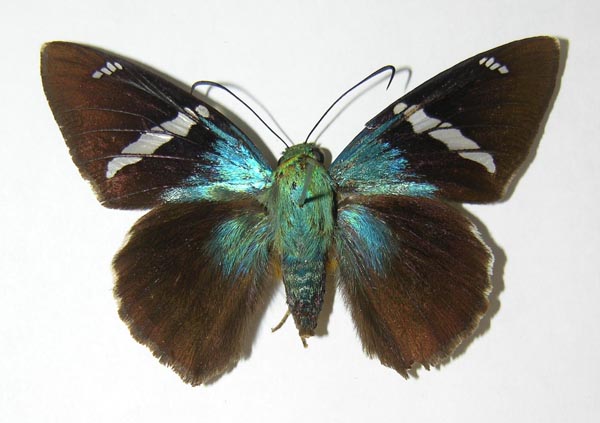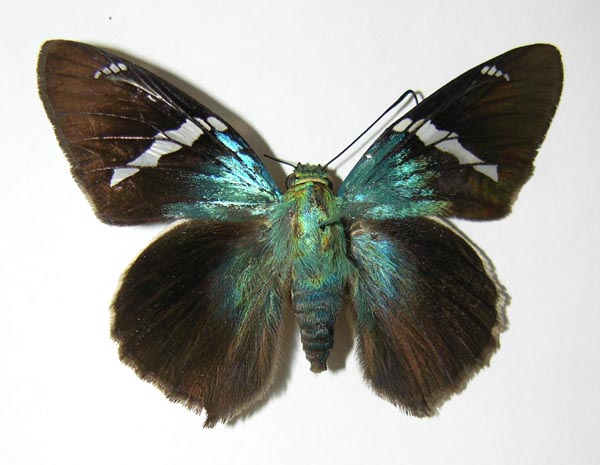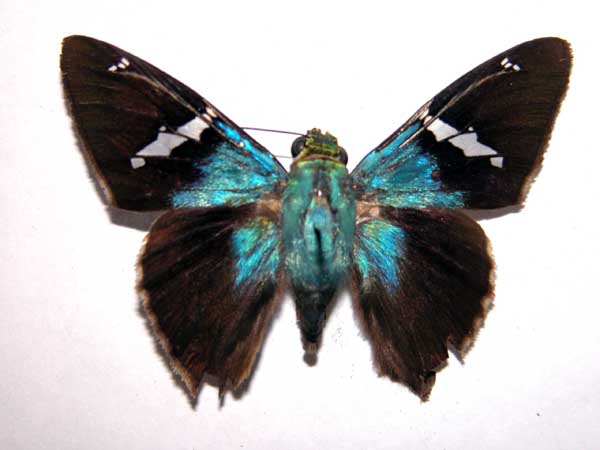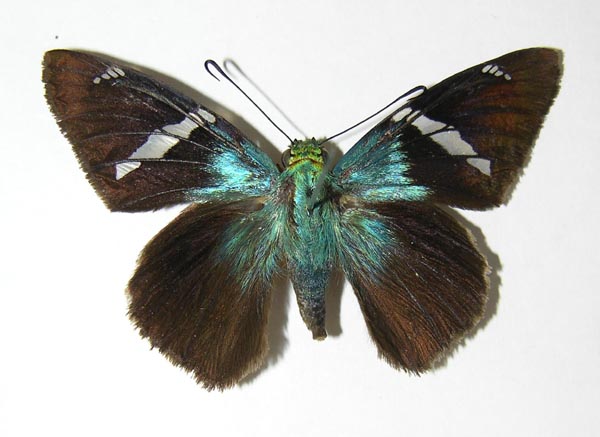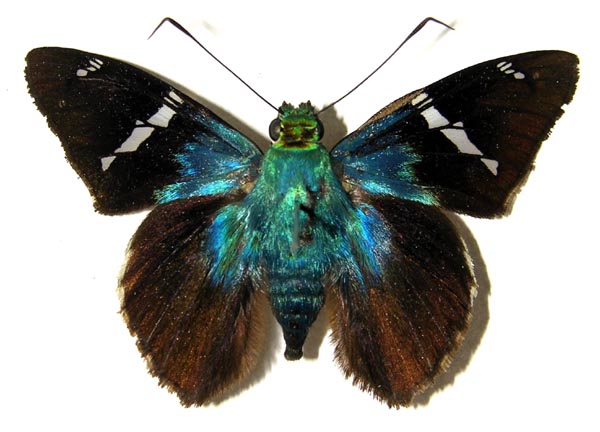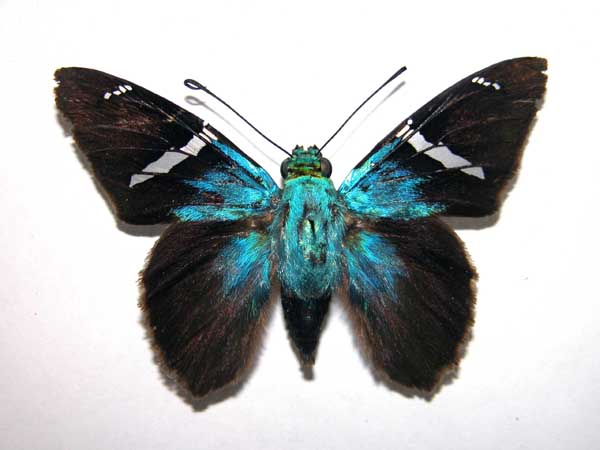The Skipper Butterfly A Cryptic Species Complex
Are these butterflies all the same?
From a distance, these Skipper (Astraptes) butterflies look very much alike. Scientists have long agreed that, based on physical features, all ten of these Skipper specimens were the same species. Yet one question bothered some scientists. Why do the caterpillars look so different from each other? In 2004, DNA barcoding provided the answer! It proved that these Skipper butterflies are members of a cryptic species complex – a group of physically identical but genetically different species that are "hidden" among each other.
From the researcher's perspective...
A "cryptic species complex" is a group of individual organisms which are virtually identical in appearance but nonetheless each satisfies the biological definition of a species—that is, they are reproductively isolated from each other. Cryptic species complexes are thought to be very common in nature and are often comprised of very close phylogenetic relatives, but the morphological similarity of the species makes it difficult to distinguish them by traditional taxonomic methods.
A potential solution to the problem of characterizing separate species within a cryptic species complex may be the science of DNA barcoding. In a 2004 study by Hebert et al, scientists were able to confirm, using DNA barcoding, that the tropical skipper butterfly Astraptes fulgerator native to Costa Rica is, in fact, a cryptic species complex comprised of 10 separate individual species. Upon closer investigation, the DNA barcoding findings corresponded with observed differences in appearance of the caterpillar stage of each species, as well as their larval food plant preference and minute details of the adult color pattern.
How often are widespread "species", such as A. fulgerator, really an amalgam of specialized, reproductively isolated lineages? The answer to this question is crucial to refining estimates of species diversity in the animal kingdom. These results have motivated a broad-ranging evaluation of the incidence of cryptic species, an effort that is expedited by use of an efficient screening procedure like DNA barcoding.
Daniel H. Janzen, Winnie Hallwachs, and John Burns
DNA Barcode of Astraptes fulgerator
Accessed from Barcode of Life Data Systems
GBGL7992-12 | 142-ADW | Astraptes fulgeratora | COI-3P
ATTGGATTACTAGGATTTATTGTTTGAGCTCATCATATATTTACTGTAGGAATAGATATTGATACACGAGCTTAC TTTACTTCAGCTACTATAATTATTGCTGTCCCCACTGGAATTAAAATTTTTAGTTGATTAGCAACACTTCATGGT ACTCAAATTAATTATAGACCATCTATATTATGAAGATTAGGATTTGTATTTCTATTTACCGTAGGAGGATTAACA GGAGTAATTTTAGCTAATTCATCAATTGATATTACTTTACATGATACTTATTATGTTGTAGCACATTTTCATTAT GTTCTCTCTATAGGAGCTGTATTTGCTATTTTTGGAGGATTCATTCATTGATATCCTTTATTTACTGGACTTACT CTTAATCCTTATTTATTAAAAATTCAATTTATTTCTATATTTTTTGGTGTTAATTTAACCTTTTTCCCCCAACAT TTTTTAGGCTTAGCAGGAATACCTCGACGATATTCTGATTATCCTGATAGCTACATTTCATGAAATGTAATTTCT TCTTTCGGATCATATATTTCATTACTATCAATAATAATAATAATAATTATTATCTGAGAATCAATAATTAATCAA CGATTAATTTTATTTCCTTTAAATATATCATCTTCTATTGAATGACTCCAAAATTTACCTCCTGCTGAACATTCT TATAATGAATTACCTATTTTAAGAAACTTCTAA


